Healthcare
Wakayama Medical University Hospital - Improving Reading Efficiency with Ultrawide, Curved Monitors
In May 2022, Wakayama Medical University Hospital installed a total of 22 RadiForce monitors (RX1270, RX660, and RX360) for medical imaging, as well as 21 FlexScan monitors (EV3895, EV2795, and EV2460) used in conjunction with them to display electronic health records and diagnostic reports.
We interviewed Dr. Akinori Nishikawa and Dr. Yasutaka Noda from the Department of Medical Information to find out why they chose EIZO and what their impressions are of the monitors.
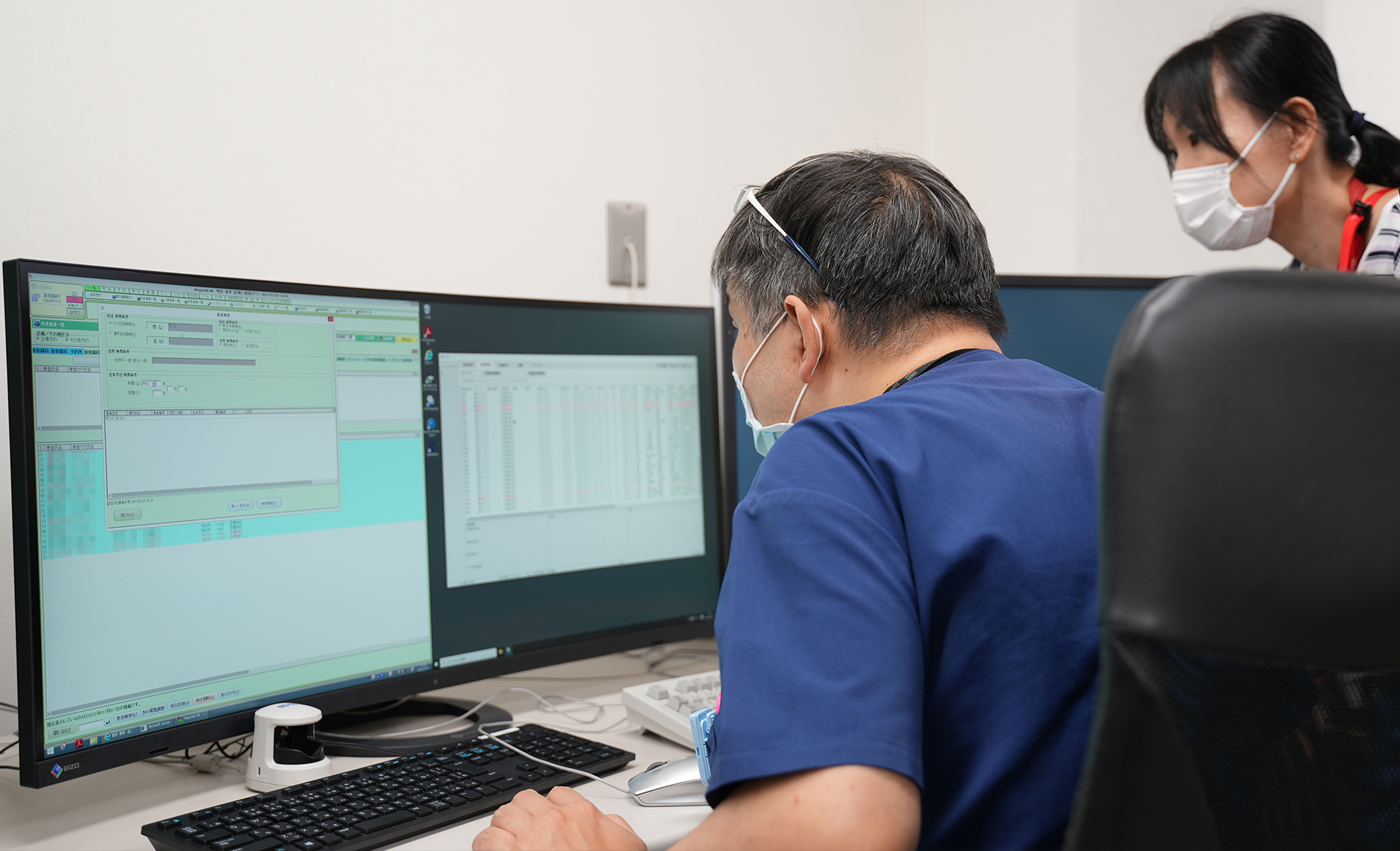
What is the main function of the Department of Medical Information?
Providing a Comfortable Work Environment for Clinical Personnel
|
The day-to-day work of the Department of Medical Information revolves around researching the various hardware available on the market and selecting and implementing equipment for use in the hospital at the lowest possible cost. When purchasing hardware, our priority is to create an ergonomically comfortable work environment that doesn’t put undue stress on the people who actually use the equipment.
For example, we recently installed new monitors in the reading room. There, a radiologist may view 40 or 50 images in a single day, sometimes working for many hours in a row. So we focused on what might seem like minor ergonomic factors to make the work less physically demanding, such as minimizing eye movement needed, providing plenty of space to view images with minimal scrolling, and allowing users to maintain proper posture. |
 Dr. Akinori Nishikawa
Dr. Akinori NishikawaDepartment of Medical Information Wakayama Medical University Hospital |
 Dr. Yasutaka Noda
Dr. Yasutaka NodaDepartment of Medical Information Wakayama Medical University Hospital |
Why did you choose EIZO monitors for your workflow?
Fewer Monitors for a Cleaner Work Environment
Previously, we used a combination of one 6 megapixel RadiForce RX650 color monitor for medical imaging, with 23.8-inch Full HD (1920×1080) color monitors on each side to display electronic health records and diagnostic reports. This setup was able to display a lot of information, but the amount of horizontal space it took up was a major drawback.
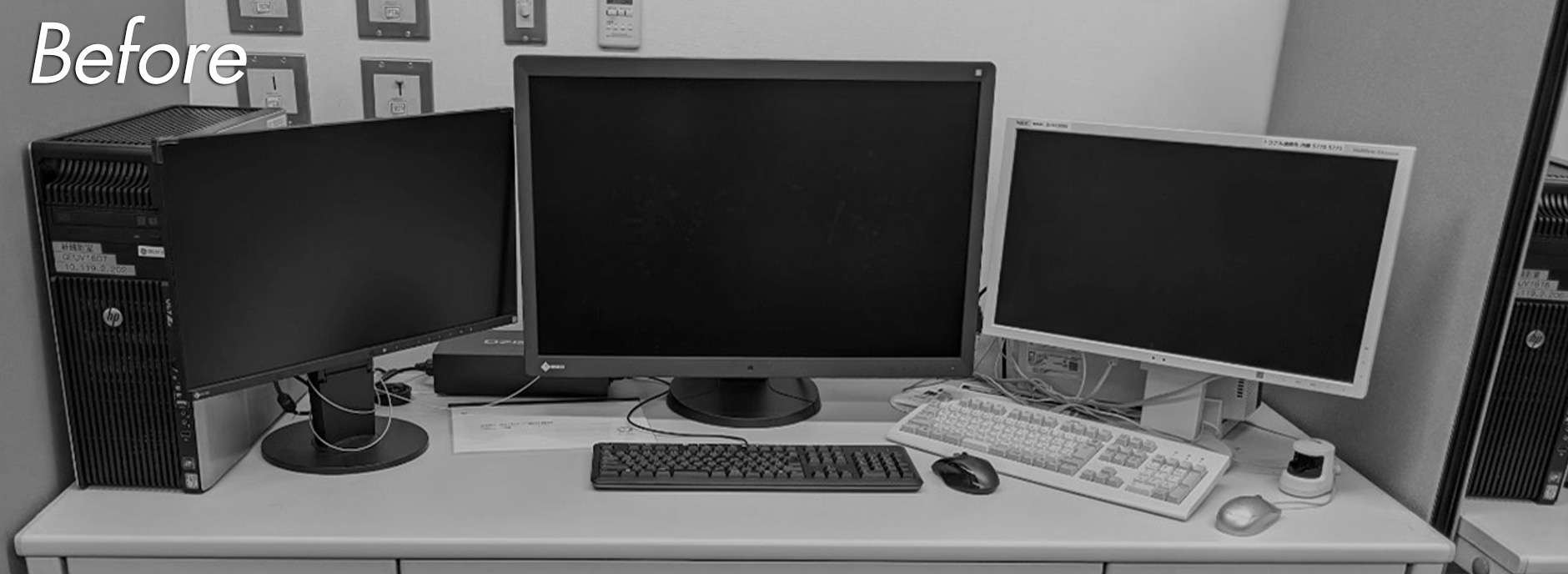
Before
RX650 and Two Full HD Monitors
So, we replaced the two Full HD monitors with one ultra-wide FlexScan EV3895 monitor to display electronic health records and diagnostic reports. The EV3895 has a UWQHD+ (3840×1600) resolution, roughly three times that of a Full HD monitor, but with its curved form factor, it takes up less desk space than the two monitors it replaced, for a cleaner overall look.
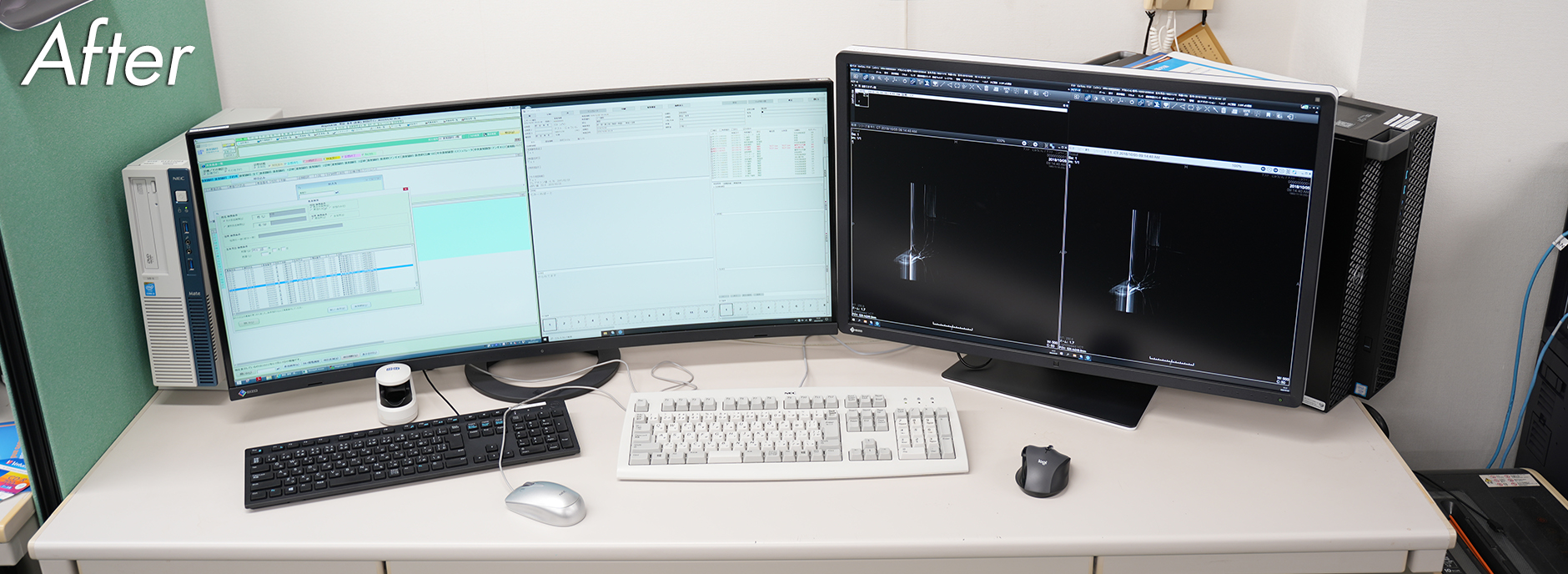
After
EV3895 (left) and RX660 (right)
EIZO has offered a five-year warranty on their monitors for a long time, and they’re very reliable, so their prices are actually quite reasonable for a five- or six-year life cycle.
What has been your experience with the monitors?
Reducing Eyestrain by Reducing Eye Movement
We use the FlexScan EV3895’s split-screen function to use one monitor for two computers. The left half of the monitor displays electronic health records, and the right half displays diagnostic reports. We have a high-definition RX660 monitor next to it to display medical images.
The EV3895’s curved screen minimizes the change in focal distance when you’re looking at the center or the edges of the monitor, and the integration of two monitors into one means there’s no bezel between the screens, resulting in smoother eye movement and less eyestrain. Before making our decision, we also looked at curved monitors from other companies, but they were generally optimized more for gaming: they were designed with things like high refresh rates, glossy surface finishes that caused glare, and low vertical resolution. The EIZO EV3895, on the other hand, has an anti-glare finish, a high vertical resolution of 1,600 pixels, and an easy-to-use split-screen feature, all of which are ideal for a curved monitor to be used as part of the reading environment.
A low vertical resolution is a particularly annoying when viewing diagnostic lists or electronic health record screens because of how much scrolling winds up being necessary. The 1,600 pixel vertical resolution of the EV3895 is great – it can display a lot of information at once, and it’s especially good for referencing patient and disease information in the electronic health records while handling interpretations and writing reports.
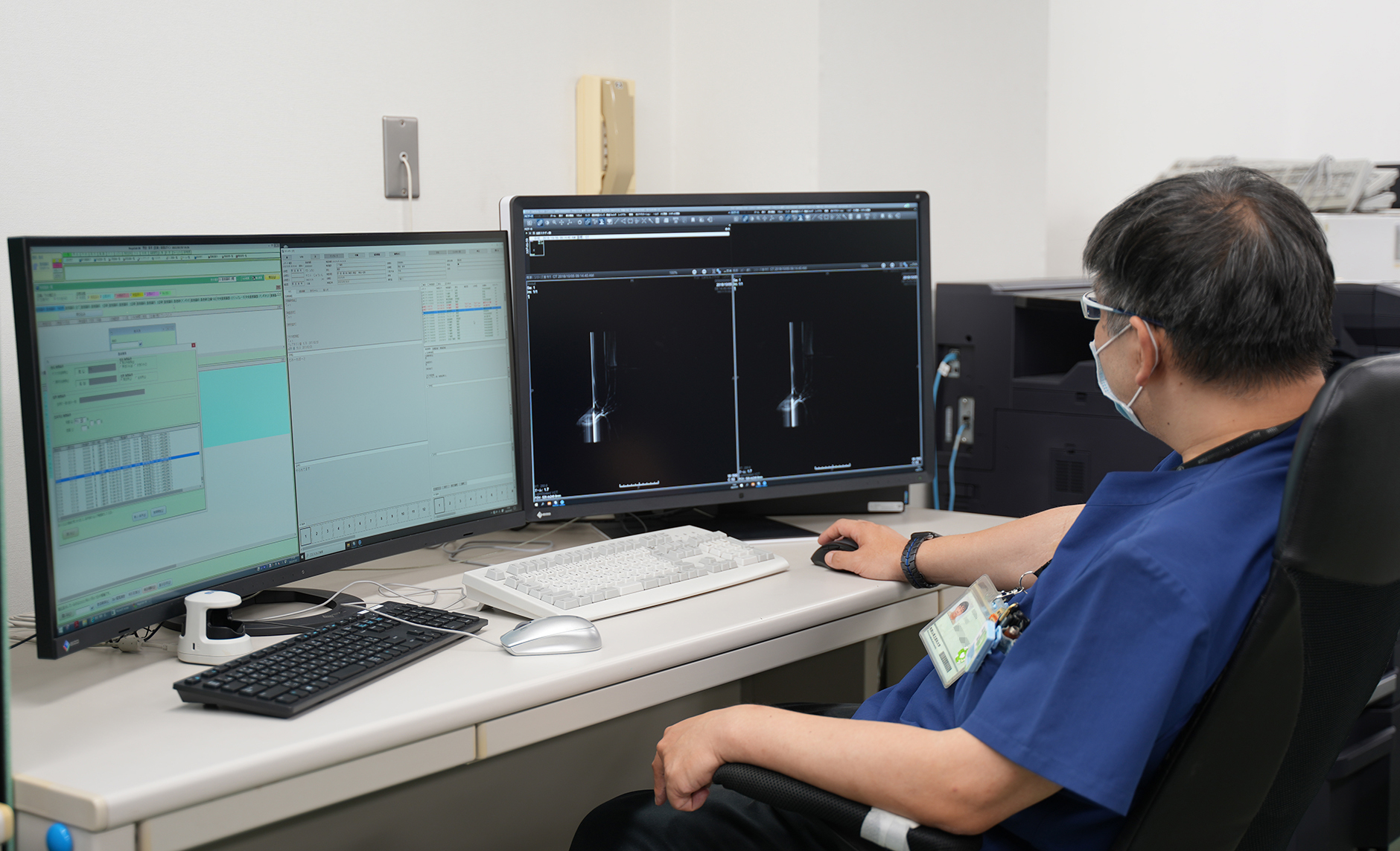
Making Work More Efficient with a Single Ultra-Wide Screen
The last time we upgraded our high-definition medical imaging monitors in 2015, we replaced the two 3 megapixel monitors we were using with a single 6 megapixel monitor, the RadiForce RX650. When two monitors are placed side-by-side, the bezels get in the way because they’re right in the middle. This means more eye movement and a less comfortable experience. Replacing them with a single 6 megapixel widescreen monitor was a huge improvement in usability, so for this round of upgrades we went with the RX660, the successor to the RX650. The RX650 had a relatively large AC adaptor that sometimes got in the way during installation, but the RX660 has a more compact design with the AC adapter integrated into the monitor itself, which helps.
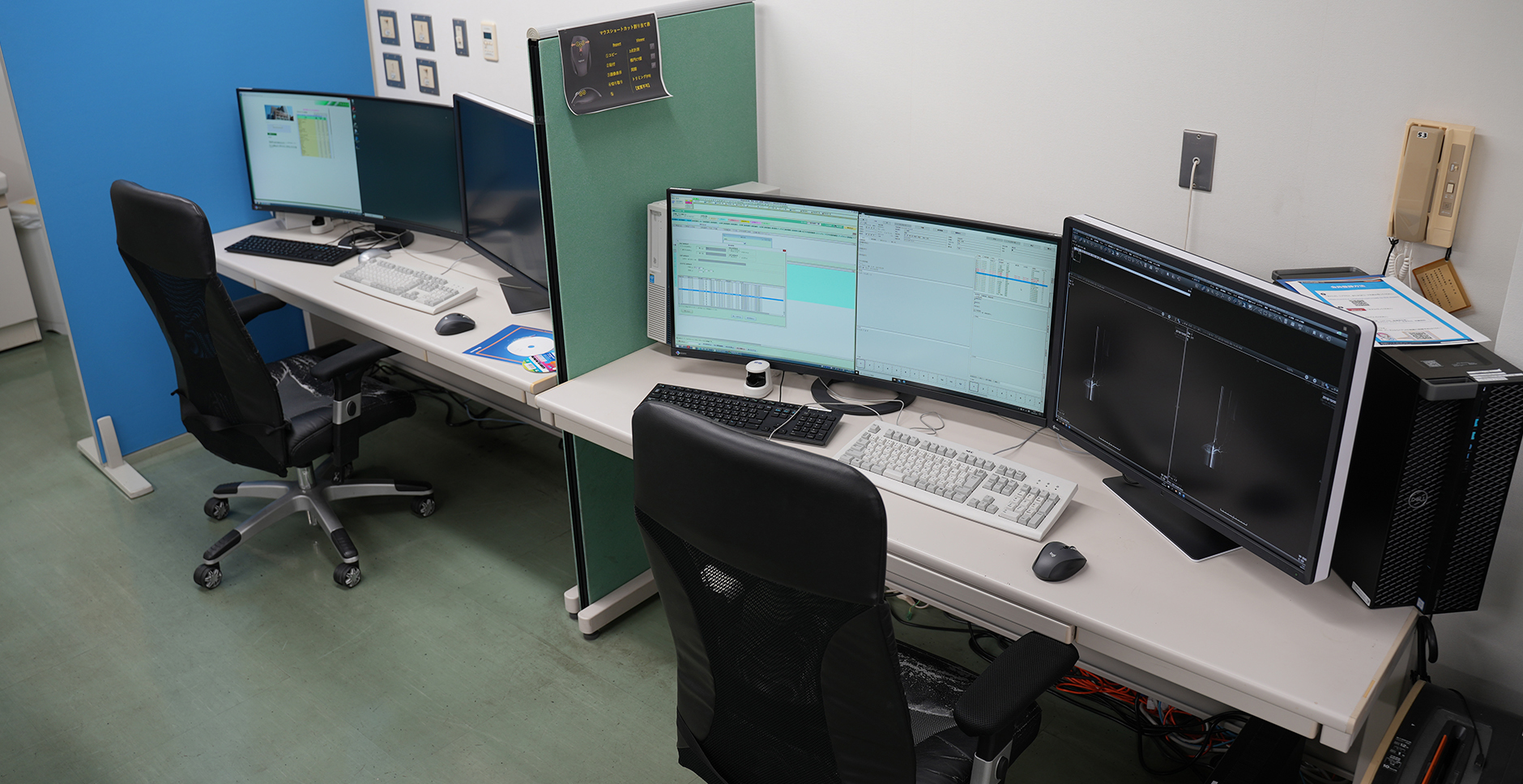
This time, we also upgraded our mammography monitors. Previously, we used two 5 megapixel monochrome monitors, which were fine for viewing mammography images specifically, but our breast imaging radiologists wanted to be able to view color images, such as SPECT and ultrasound results, simultaneously. This is why we decided on the 12 megapixel RadiForce RX1270 color monitor.
The RX1270 can display as much as two 5 megapixel monitors on a single screen, but without a bezel in the way, which reduces eye movement and makes it as convenient and comfortable to use as the 6 megapixel monitor. It’s also a color monitor, rather than monochrome, so it can simultaneously display color images like SPECT and ultrasound results. Budget constraints meant that we could only purchase one RX1270 monitor this time around, but we hope that this will become an option for us in the future.
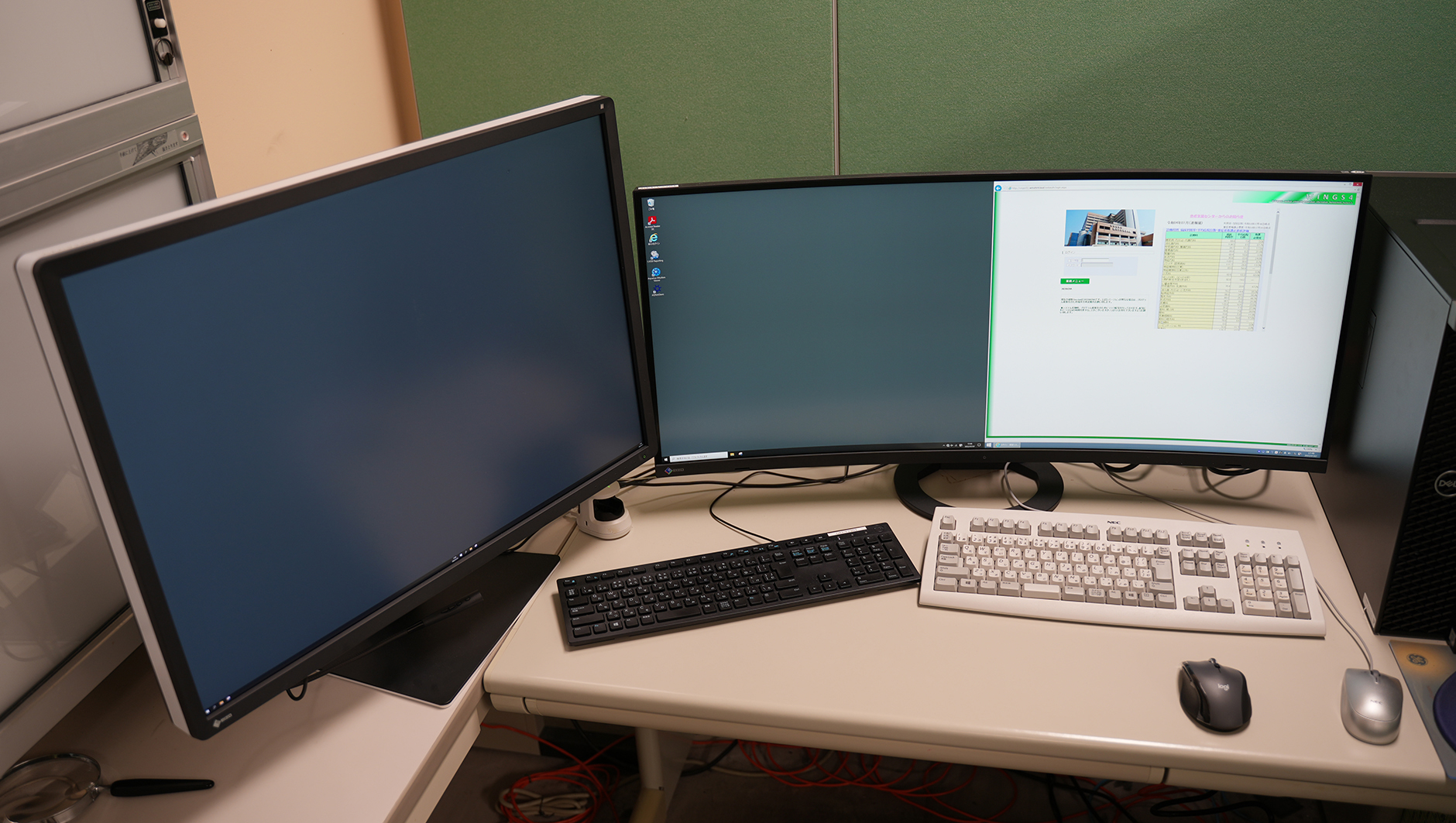
RX1270 (left) and EV3895 (right)
Vertically Stacked Monitors for Tight Spaces
For smaller spaces where the EV3895 won’t fit, we use a 27-inch WQHD (2560×1440) resolution FlexScan EV2795 and a 23.8-inch Full HD (1920×1080) resolution FlexScan EV2460 in a vertically stacked arrangement.
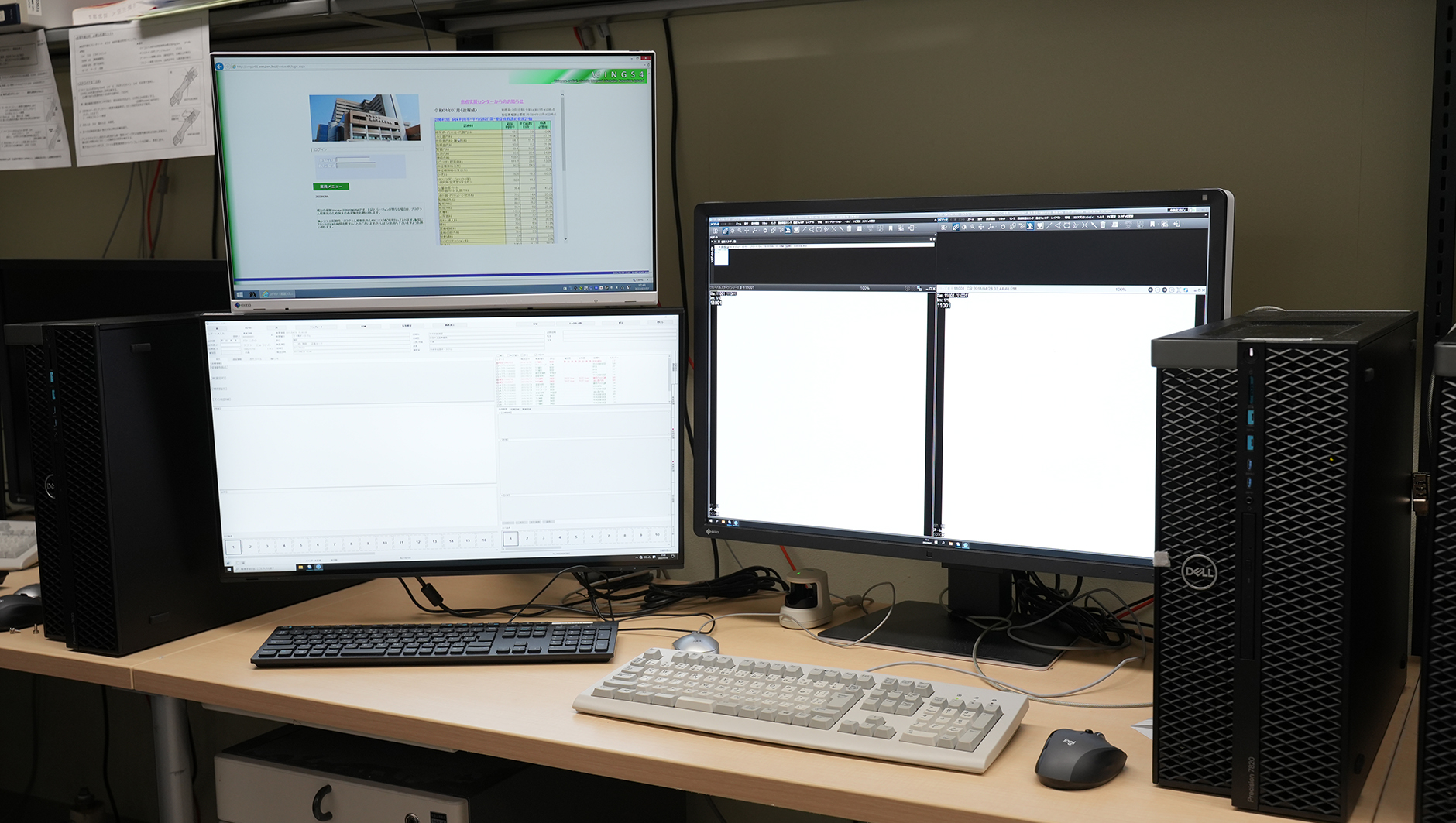
Do you have any requests for EIZO?
The EV3895 opened my eyes to the value of a curved monitor, but I hope that future models can have an even greater curvature to the surface for a greater sense of immersion. Also, when viewing images long periods of time, it’s more comfortable to lean back in your chair, so it would be nice to have a flexible arm to be able to position the monitor higher so you can continue working while leaning back. I hope that EIZO will continue to offer excellent new products that help make medical image reading more efficient.
|
Wakayama Medical University Hospital Website |
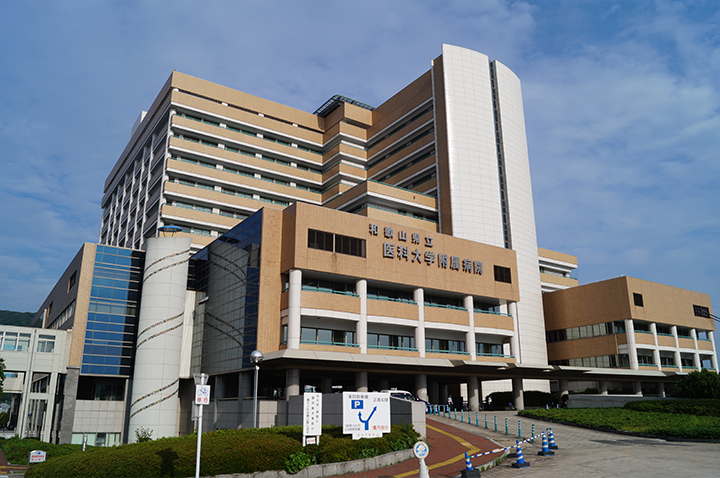 |
![]()

